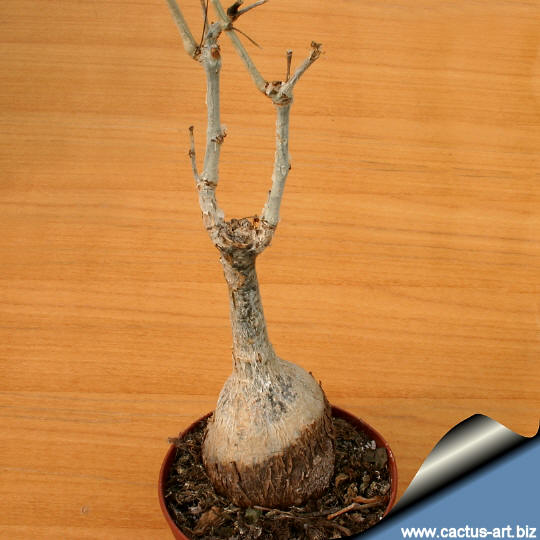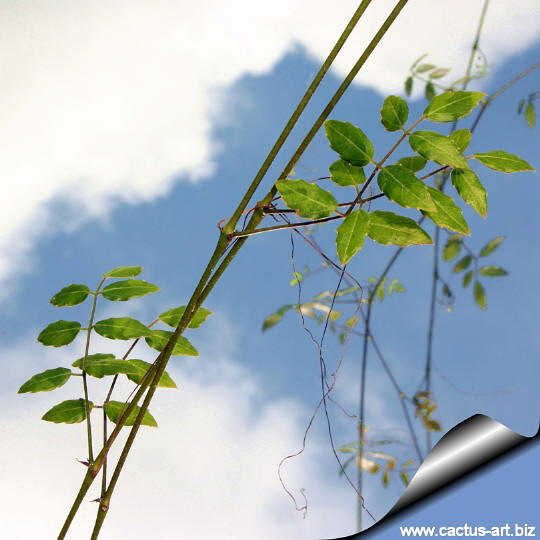|
|
|
Family: Vitaceae (Ampelidaceae)
Scientific name: Cyphostemma laza
Descoings 1962
Origin: Endemic to Madagascar. Cyphostemma laza is probably the
most widespread throughout species of the genus in Madagascar.
Common Name: Elephant-foot Grape Tree.
Etymology: The genus name comes from Greek kyphos, meaning hump, and stemma,
meaning garland. Laza is the Malagasy name.
Formerly included in the genus Cissus, the genus
Cyphostemma contains some of the most desirable and attractive of all caudiciform plants.
Synonyms:

C. laza in winter without leaves.
Aged plant of this species are spectacular sights in succulent and
caudiciform collections, but are not difficult to grow.
|
|
Description: This is a smal a tree-like
caudiciform species with peeling pale trunk and vining. In its native
habitat, this extraordinary pachycaul member of the Vitaceae is a rare
and long-lived plant.
Caudex: The caudex, at first green, becomes brownish-grey and woody as the
plant ages. It is narrowly conical and grows 50 to 150 cm tall or more,
30-50cm in diameter
Stem (vines): The twiggy branching vines reaches 5 meters.
Leaves: Light green with 7-9 large lanceolate leaflets, slightly
succulent. In the wild, leaves are shed during the dry season; and in
cultivation, they fall as winter approaches.
Flower: Brown/greenish.
Fruit: Spherical, 1.2-1,5 cm, with persistent style, black-purple
when ripe, and poisonous.
|
|
|
|

Cultivation: Grows in a rich, very well
drained, preferably stony soil with some water and lots of sun
throughout the year. It is suited to greenhouse culture, but does well
out of doors in Mediterranean climate. It doesn't like a
wet winter,
but will survive. Water plentifully in summer but keep rather dry in
winter at a minimum of some 12°C. C. laza,
like all pachycaul succulent
species of Cyphostemma, is sensitive to excess moisture, and should be
kept on the dry side. Mature plants are hardy to 2° C. Can't stand
any frost. Exposure: light shade. For soil in full sun throughout the
year.
Propagation: Propagates usually from seeds that must be prepared,
aged and scarified, and even then germination is uncertain or by
cuttings.
|
|